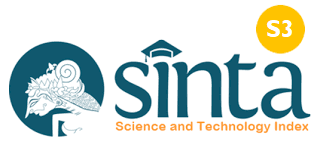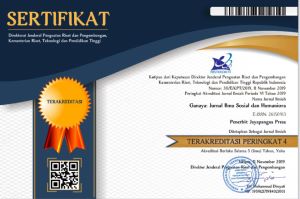Pola Komunikasi Organisasi Dalam Pengembangan Program Studi Filsafat Hindu STAH Negeri Mpu Kuturan Singaraja
DOI:
https://doi.org/10.37329/ganaya.v4i2.1353Keywords:
Pattern, Organizational Communication, Hindu Philosophy Study ProgramAbstract
The STAH Negeri Mpu Kuturan Singaraja Hindu Philosophy Study Program is a new study program with minimal interest in prospective new students. Minimal in quantity, but the organization in the study program is currently complete, both lecturers, employees, and students. The minimum number of lecturers and students requires a form of communication that functions to unite study programs and minimize misunderstandings in interpreting orders or information. This research is a qualitative research with a phenomenological approach. Sources of data in this study were obtained by direct interviews and using several data sources that are helpful in analyzing such as books on communication. Data collection was carried out by observation, interviews with purposive sampling method, literature study, and documentation.
The pattern of organizational communication in the Hindu Philosophy Study Program uses more top-down communication patterns, and bottom-up communication. The organizational communication function in the Hindu Philosophy study program STAHN Mpu Kuturan Singaraja is Informative Communication by using WhatsApp group chat Hindu Philosophy Study Programs to help lecturers and employees work on the Tri Dharma of Higher Education to be more focused, Regulatory Communication, namely the delivery of messages related to regulations in carry out the duties of the people who control the message of the organization, Persuasive Communication, namely changing attitudes and behavior as well as beliefs of a person, Integrative Communication functions and is useful for integrating all messages or information and communications that have been given by the leadership of the organization to members of the organization.
References
Ardial. (2018). Fungsi Komunikasi Organisasi Studi Kasus Tentang Fungsi Komunikasi Organisasi Terhadap Kinerja Pegawai, Medan: Lembaga Penelitian dan Penulisan Ilmiah Aqli.
Arni, M. (2005). Komunikasi Organisasi, Jakarta: PT. Bumi Aksara.
Cangara, H. (2007). Pengantar ilmu Komunikasi. Jakarta: Rajawali Pers.
Devito, J. A. (1997). Komunikasi Antar Manusia : Kuliah Dasar Edisi ke lima (Agus Maulana. Terjemahan). Jakarta : Professional Book
Muhammad, A.(1995). Komunikasi Organisasi, Jakarta: Bumi Aksara.
Moeljono, D. (2006). Budaya Organisasi Dalam Tantangan, Jakarta.: PT Alex Media Komputindo.
Morissan. (2009). Teori Komunikasi Organisasi. Bogor: Ghalia Indonesia.
Purwanto,D. (2006). Komunikasi Bisnis, Edisi ketiga. Jakarta: Erlangga
Romli, K. (2014). Komunikasi Organisasi Lengkap. Jakarta: Grasindo.
Wiryanto.(2004). Pengantar Ilmu Komunikasi.Jakarta: PT. Grasindo.
Wijaya, I. S. (2013). Dinamika komunikasi organisasi di perguruan tinggi. Jurnal Dakwah Tabligh, 14(2), 203-215.
Wursanto, Ig. (2005). Dasar-Dasar Ilmu Organisasi. Yogyakarta: Andi.
Downloads
Published
How to Cite
Issue
Section
License
An author who publishes in the Ganaya : Jurnal Ilmu Sosial dan Humaniora agrees to the following terms:
- Author retains the copyright and grants the journal the right of first publication of the work simultaneously licensed under the Creative Commons Attribution-ShareAlike 4.0 License that allows others to share the work with an acknowledgement of the work's authorship and initial publication in this journal
- Author is able to enter into separate, additional contractual arrangements for the non-exclusive distribution of the journal's published version of the work (e.g., post it to an institutional repository or publish it in a book) with the acknowledgement of its initial publication in this journal.
- Author is permitted and encouraged to post his/her work online (e.g., in institutional repositories or on their website) prior to and during the submission process, as it can lead to productive exchanges, as well as earlier and greater citation of the published work (See The Effect of Open Access).
Read more about the Creative Commons Attribution-ShareAlike 4.0 Licence here: https://creativecommons.org/licenses/by-sa/4.0/.








